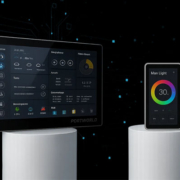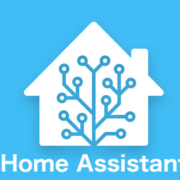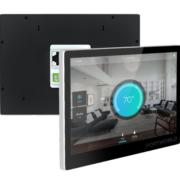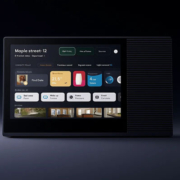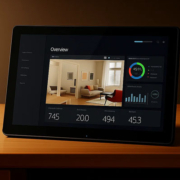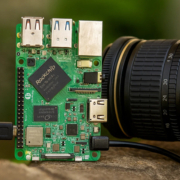Smart Home Touch Screen Panels: Android and Linux Integration
As smart home technology continues to evolve, smart home touch screen panels have become essential components for controlling and managing home automation systems. These panels offer an intuitive interface for users to control lighting, security systems, climate control, entertainment, and more. Among the various operating systems powering these devices, Android and Linux stand out due to their versatility, stability, and open-source nature, making them ideal for modern smart home setups.
In this article, we explore the benefits of Android and Linux integration in smart home touch screen panels, and how they enhance the functionality, security, and flexibility of smart homes.
What Are Smart Home Touch Screen Panels?
A smart home touch screen panel is a central control device used to manage various aspects of a smart home environment. It acts as the nerve center, allowing users to interact with and control devices such as lights, HVAC systems, security cameras, alarms, door locks, and home entertainment systems. These panels are typically equipped with a high-resolution touchscreen and offer features like multi-device integration, voice control, and automation scheduling.
The Android and Linux operating systems are increasingly being used to power these panels, providing unique advantages for customization, stability, and ease of integration with various smart devices.
Android and Linux: The Ideal OS for Smart Home Panels
1. Android-Powered Smart Home Panels
Android-based smart home panels are popular due to their flexibility and app integration capabilities. The Android operating system provides an open platform that allows manufacturers to easily develop and customize features tailored to the needs of smart home users. Here’s why Android is ideal for smart home control:
- App Compatibility: Android offers access to the Google Play Store, allowing users to install a wide range of third-party apps for additional smart home functionalities. Whether it’s controlling smart thermostats, managing entertainment systems, or automating tasks, Android provides the flexibility to enhance the smart home experience.
- Customizable User Interface: One of the standout features of Android is its ability to offer customizable interfaces. Manufacturers can design user-friendly and intuitive dashboards, allowing users to organize their smart home controls according to their preferences.
- Seamless Integration with Android Devices: Many smart home devices, such as lights, thermostats, and voice assistants, are designed to be compatible with Android. This ensures seamless communication and integration, making it easy for users to control all devices from a single interface.
2. Linux-Powered Smart Home Panels
Linux offers an alternative to Android that focuses on stability, security, and cost-effectiveness. As an open-source operating system, Linux provides a high level of flexibility for manufacturers and developers to build custom smart home solutions. Here’s why Linux is an excellent choice for smart home panels:
- Reliability and Security: Linux is known for its stability and security, which are critical for any system that needs to operate continuously without fail. For smart homes, security is a top priority, and Linux ensures that systems remain protected against potential cyber threats.
- Customizable and Open-Source: Since Linux is open-source, it allows developers to customize the OS according to specific needs. This means manufacturers can build highly specialized panels for various industries, such as healthcare, hospitality, and industrial automation, by tailoring the software and functionalities.
- Cost-Effective: Linux is a free and open-source platform, which makes it a cost-effective solution for manufacturers. This results in lower production costs and ultimately, more affordable smart home panels for consumers.
Key Benefits of Android and Linux Integration in Smart Home Panels
- Multi-Device Integration: Both Android and Linux-based smart home touch panels are designed to integrate seamlessly with a wide range of devices. This includes lighting systems, security cameras, door locks, temperature sensors, and entertainment systems. By centralizing control in one panel, users can manage all aspects of their home effortlessly.
- Voice Control and Automation: Many Android and Linux-powered panels support voice assistants such as Google Assistant, Amazon Alexa, and Siri. This enables hands-free control over various smart devices, further enhancing the user experience. Additionally, users can set up automation rules, like adjusting the temperature when they leave home or turning off lights when they go to bed.
- Remote Access and Control: Both Android and Linux operating systems support cloud connectivity, enabling users to control their smart home remotely via mobile apps or web interfaces. This means that even when away from home, users can monitor security cameras, adjust thermostats, and manage other smart devices.
- Energy Efficiency: With features like remote monitoring and automation, smart home panels help homeowners optimize energy usage. By managing lights, climate control, and appliances more efficiently, users can reduce energy consumption and lower utility bills.
Applications of Smart Home Touch Screen Panels with Android and Linux
The integration of Android and Linux in smart home touch screen panels opens up a wide range of applications across different sectors:
- Residential Smart Homes: In residential applications, smart touch screen panels control lighting, heating, security, and entertainment systems. Android and Linux-based panels offer a user-friendly interface for homeowners to automate their environment and create personalized settings for comfort and convenience.
- Commercial Buildings: In commercial environments such as offices, hotels, and retail spaces, smart panels are used to manage lighting, heating, HVAC systems, security, and even meeting room reservations. By integrating Android or Linux, these panels ensure a seamless operation across a variety of smart building systems.
- Healthcare: In hospitals and healthcare settings, Linux-powered smart panels are used to control lighting, HVAC systems, and even manage patient room data. Android-based panels can integrate with medical devices and hospital management systems to provide real-time monitoring and efficient control.
- Industrial Control: Smart home panels based on Android or Linux are increasingly used in industrial environments to control machinery, monitor factory conditions, and track performance. These systems are customizable to meet specific industry needs and can operate in harsh environments.
Smart home touch screen panels powered by Android and Linux are revolutionizing how we manage and automate our home environments. These operating systems provide the flexibility, reliability, and security necessary to build robust and intuitive smart home systems. Whether for residential, commercial, or industrial use, Android and Linux offer unparalleled customization options and seamless integration with a wide range of devices.
As more smart home solutions emerge, Android and Linux-powered touch screen panels will continue to play a central role in connecting devices, enhancing automation, and improving the overall user experience. By choosing the right platform and panel, users can create a smarter, more efficient, and secure home or business environment.

